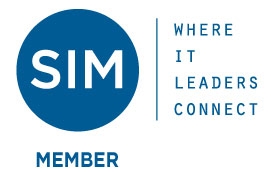I’m now working with a big industrial company to help them overhaul their internal mobility program. The company just started using our Performance-based Hiring Quality of Hire Talent Scorecard for external hires and now wants a version to identify current team members who have significant upside potential. Following is a quick description of what we recommended.
First, their current ranking system needed to be upgraded. Part of this was to provide more objective guidance based on a person’s track record of past performance in comparison to the person’s peer group as the benchmark. The company’s existing internal ranking scheme was too vague on all these fronts inviting bias and subjectivity. Following is how we clarified our generic Performance-based Hiring 1-5 ranking scale to address these issues. (Note: Job seekers can use this as a guide to help “prove” you’re a high-performing individual. Make sure you ask forced-choice questions to ensure you’re asked the right types of questions, though.)
- Level 1: Basic competency only. Needs significant extra support, coaching and/or learning to meet minimum standards of performance.
- Level 2: Adequate competency. Needs some extra support, coaching and/or learning to meet current standards of performance.
- Level 2.5: Average performance among peer group. Needs normal or minimal support, coaching and/or development to meet current standards of performance.
- Level 3.0: Top-third performance among peer group. Consistently and proactively gets whatever support, coaching, and/or training is needed to meet challenging standards of performance that exceed peer group performance.
- Level 4.0: Top 10-20% performance among peer group. Consistently does more, better and/or faster in comparison to their peer group. Recognized within the department and/or company as one of the best. Considered the go-to person for the skill, trait or factor.
- Level 5.0: Top 5-10% performance among peer group. Not only consistently far exceeds peer group performance but often achieves something unexpected. The person is recognized outside the department by company leadership as one of the best for the skill, trait or factor.
The key to this ranking system is that the assessment is based on the person’s past performance in doing the actual job and it’s made in comparison to their peer group doing comparable work. On top of this add consistency of performance into the evaluation. All three conditions need to be present to make an accurate assessment.
Given this ranking system, I then suggested that Zooming, Swimming, and Leadership were the best predictors of upside potential for both internal promotions and external hires. Here’s the quick descriptions and some ideas on how to assess these traits.
- Zooming: Zoomers have the ability to dig deep into a problem to figure out the root cause and then zoom out to figure out the best solution among various alternatives. The best of the best Zoomers are multifunctional in perspective and consider the strategic and tactical consequences into their evaluations. I ask the job-related problem-solving question to determine a person’s Zooming ability. It takes a great Zoomer to rank a Level 4 or 5 on problem-solving.
- Swimming: Promotable people have both the ability and desire to take on broader technical, team and project responsibility. Most often these are the people who have been thrown into situations that stretched them. Emerging, i.e. swimming, successfully builds confidence. I ask the most significant accomplishment question multiple times to determine how deep the person can swim. I discover that those who rank 4 or 5 haven’t stopped swimming yet.
- Leadership: In my view those who demonstrate leadership have the ability to not only visualize a solution to a problem but also have a track record of implementing successful solutions. Many of these include assignments where they’ve been asked to swim in the deep end of the pool. This pattern is fully revealed in the Performance-based Interview and assessment process I’ve been advocating for the past 25 years.
A track record of consistent past performance has been shown to accurately predict future performance doing comparable work. When this same information is evaluated using an accurate assessment system and examined through the predictors of future potential, more insight is gained. That’s why I recommend hiring and promoting people who can zoom, swim and lead. You’ll soon discover these are the people who continue to take on bigger roles and get promoted the most often.
Lou Adler (@LouA) is the CEO of The Adler Group, a consulting and training firm helping companies implement Performance-based Hiring. He’s also a regular columnist for Inc. Magazine and BusinessInsider. His latest book, The Essential Guide for Hiring & Getting Hired (Workbench, 2013), provides hands-on advice for job-seekers, hiring managers and recruiters on how to find the best job and hire the best people. His new video program provides job seekers inside secrets on what it takes to get a job in the hidden job market.














Comments are closed.